The Death of Kyle Mullen: Misconduct or Navy SEAL Training Accident?
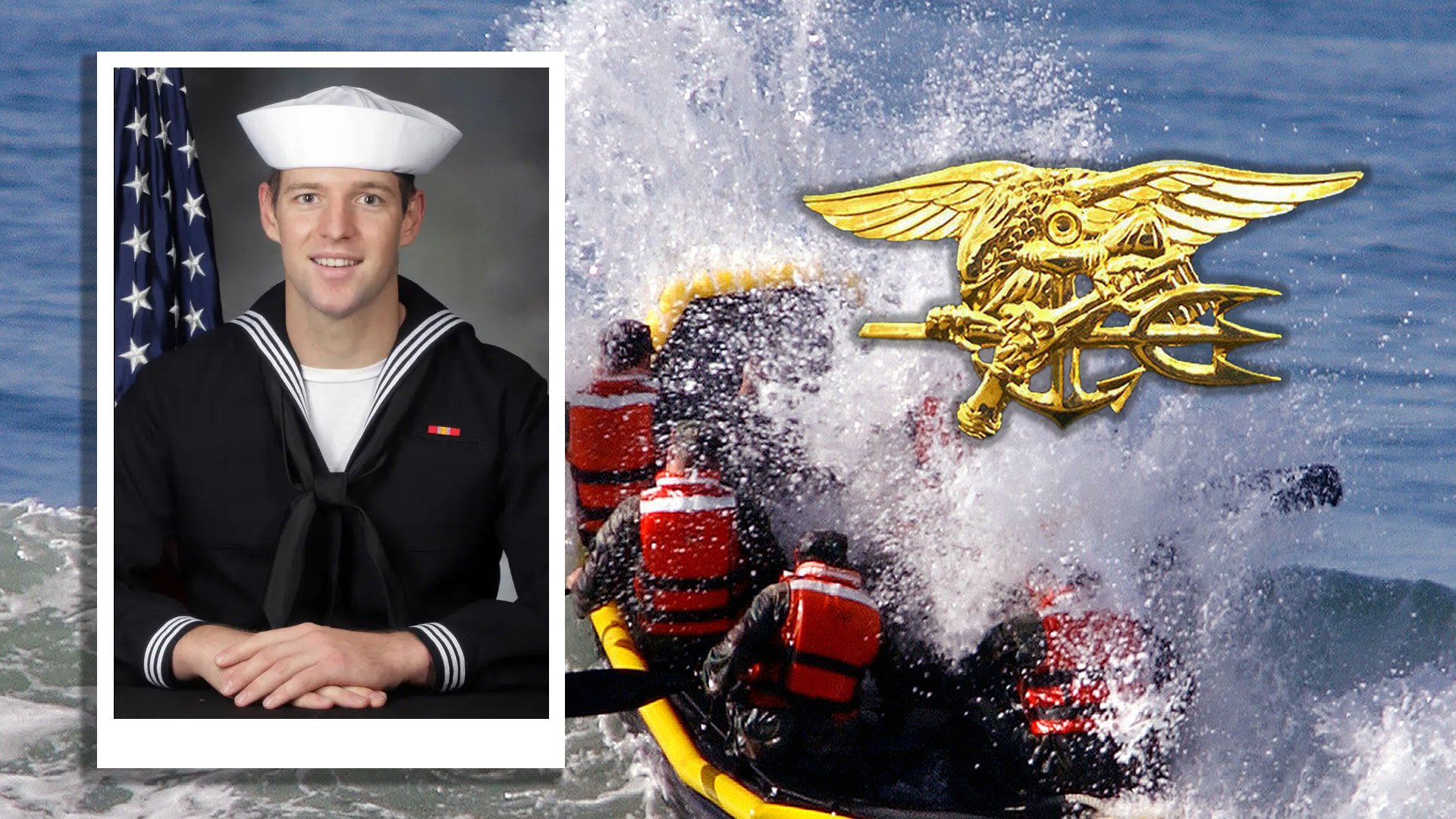
Seaman Kyle Mullen died after completing Hell Week at BUD/S. Composite by Coffee or Die Magazine.
In September 2022, US Naval Special Warfare Command completed its investigation into the death of Seaman Kyle Mullen. Mullen had died seven months earlier, at age 24, while attending the Navy’s Basic Underwater Demolition/SEAL school, or BUD/S. A primary purpose of the investigation was to determine whether Mullen’s death was the result of a Navy SEAL training accident or his “own misconduct.”
Mullen, a native of New Jersey, enlisted in the Navy in March 2021. In July that year, he began BUD/S, a punishing 21-week course held in San Diego County, California. On average, less than 30% of candidates graduate from the course. Those who do go on to attend more advanced training programs with the goal of joining one of the Navy’s elite SEAL Teams.
BUD/S consists of three seven-week phases. The culminating event of the first phase is “Hell Week.” To pass Hell Week, candidates must endure five and a half days of grueling challenges, such as hauling telephone poles across soft sand, running footraces with inflatable boats on their heads, and lying in the freezing surf of the Pacific Ocean for long periods of time.
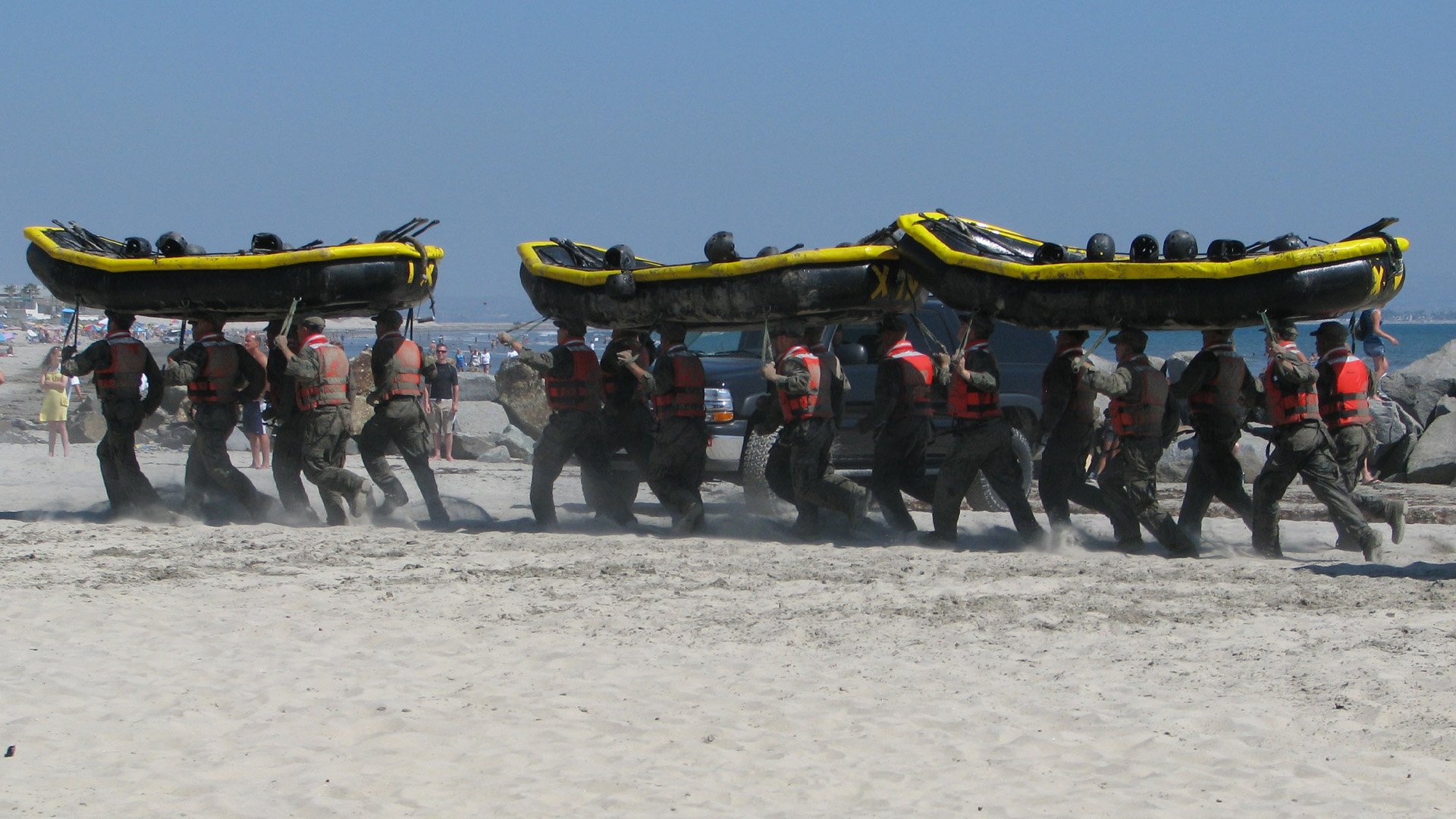
BUD/S students running through soft sand with inflatable boats on their heads. This is a common physical training evolution during the first phase of Navy SEAL training. Wikimedia Commons photo.
Mullen completed Hell Week on Feb. 4, 2022. That evening, despite having been medically cleared to continue training, he became severely ill and was rushed to the hospital. He was declared dead shortly after arriving in the emergency room.
As Mullen’s death became national news, the Navy launched a Line of Duty investigation. Soon, evidence was found that Mullen had used performance-enhancing drugs, prompting speculation that his death was self-induced. However, Navy investigators ultimately dismissed that theory, concluding instead that Mullen died “in the line of duty, and not due to his own misconduct.”
So what exactly happened to Mullen? What caused the 24-year-old Navy SEAL candidate to go into cardiac arrest just hours after completing Hell Week? And could his death have been prevented? Here’s a breakdown of everything we know.
Related: Jocko Willink Warns Against Nerfing ‘Brutal’ SEAL Training
Who Was Kyle Mullen?
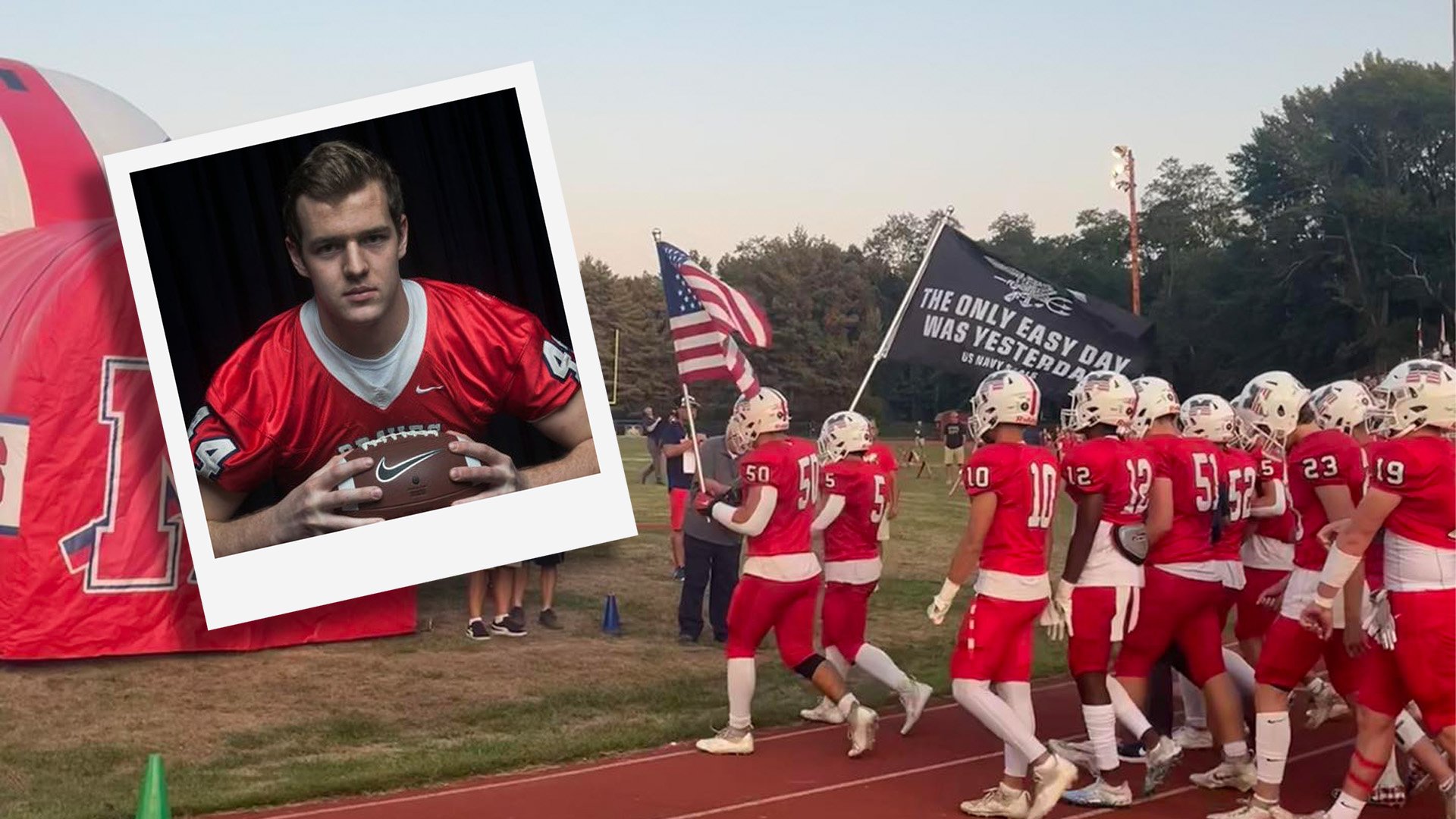
Kyle Mullen was a star student-athlete at Manalapan High School. The football team, carrying a "The Only Easy Day Was Yesterday" Navy SEAL flag to honor his memory, retired his jersey No. 44. Photo courtesy of the Remembering Kyle Mullen Facebook page. Composite by Coffee or Die Magazine.
Kyle Mullen was born in 1997 and grew up in Manalapan Township, New Jersey. He was an intelligent and athletically gifted kid. As a student at Manalapan High, he managed to maintain a 4.0 grade point average while also playing on the school’s basketball and football teams.
On the gridiron, Mullen played tight end on offense and defensive end on defense. In 2014, he helped lead his team to their first ever football state sectional championship.
After graduating high school, Mullen went to Yale on a football scholarship. He played defensive lineman on the university’s football team, beginning in the fall of 2015. He was named second-team All-Ivy and elected team captain at the end of his third season. But Mullen never served as captain of the Bulldogs because he transferred to another university ahead of his senior year.
Related: SEAL Trainee, Former College Football Player, Dies After ‘Hell Week’
Why Did Kyle Mullen Leave Yale?

Kyle, Regina, and TJ Mullen after the 2017 Harvard-Yale football game. Kyle Mullen started at defensive end and recorded three tackles, including two for a loss, leading Yale to a 24-3 win and the team’s first Ivy League championship since 1980. Photo courtesy of Regina Mullen.
In the summer of 2018, Yale head coach Tony Reno informed the football team that Mullen had withdrawn from the university because of “personal reasons.” However, according to an article published that fall in the Yale Daily News, Reno neglected to tell the team that Mullen left “in the midst of a pending investigation by the University-Wide Committee on Sexual Misconduct of an allegation that he committed ‘sexual penetration without consent.’” The paper noted that Mullen withdrew from Yale before the matter was adjudicated.
In 2019, Mullen transferred to Monmouth University in West Long Branch, New Jersey, where he continued to play football. The following year, he graduated with a bachelor’s degree in psychology, at which point he began a rigorous training regimen to prepare himself for BUD/S.
Mullen had entered college with ambitions of pursuing a career as an investment banker. But after a Yale classmate and former captain of the football team left a corporate gig on Wall Street to become a Navy SEAL, Mullen realized that he, too, might be cut out for the life of a special operator. The idea grew on him, and he made up his mind to give it a shot.
“He didn’t want an office job,” Mullen’s mother, Regina, told Coffee or Die Magazine's senior editor Matt White in a previous report. “He was like a little boy wanting to be Superman.”
Related: SEAL Candidate’s Mom: ‘He Did Not Sign Up To Not Get Medical Care’
What Happened to Kyle Mullen at BUD/S?
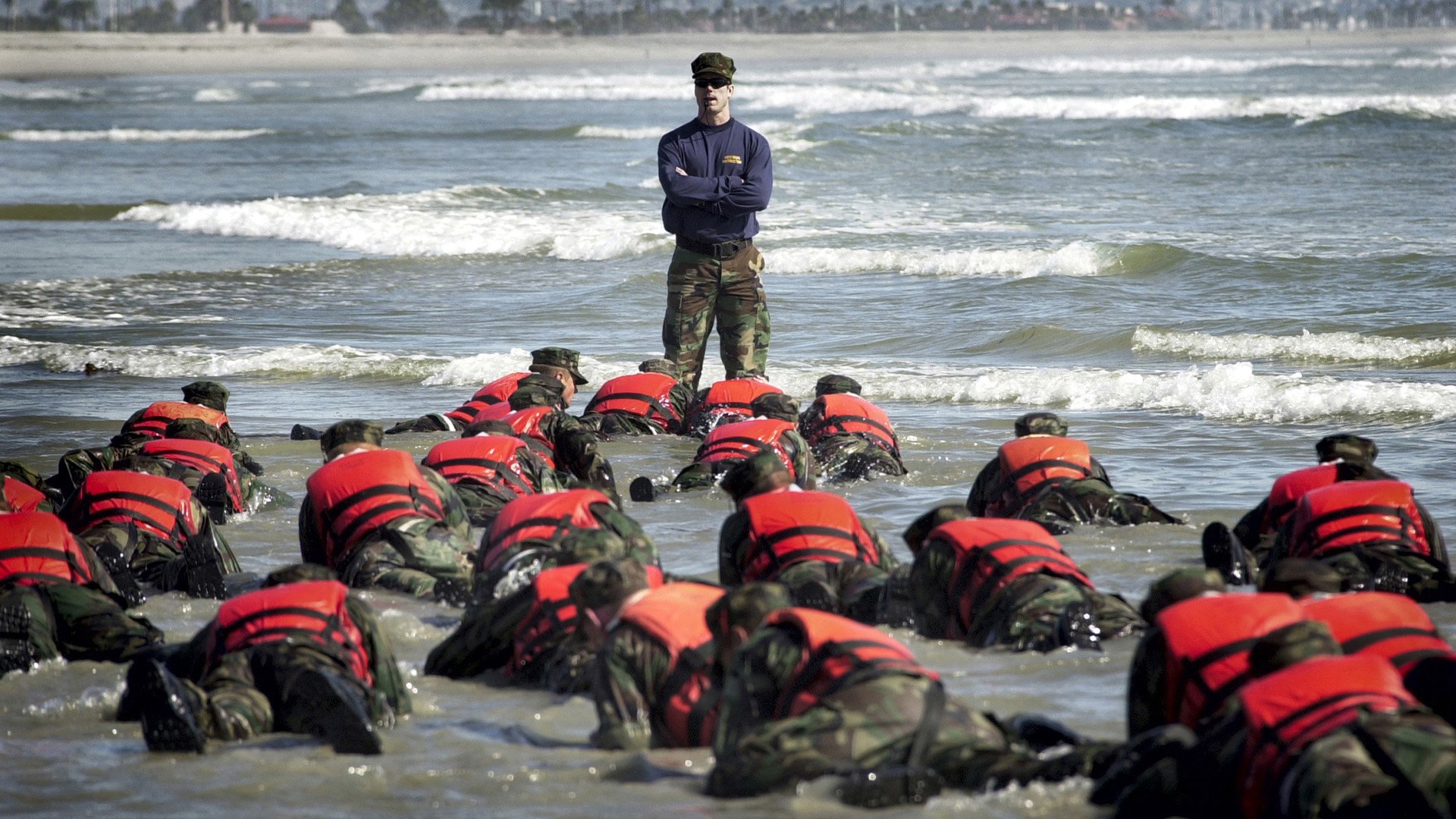
A Navy SEAL instructor overseeing BUD/S class 245 provides a lesson to his trainees during the first phase of training. Wikimedia Commons photo.
Mullen died during his second attempt to pass BUD/S. According to a 320-page investigative report endorsed by Rear Adm. Keith Davids, commander of the Naval Special Warfare Training Command, Mullen suffered heatstroke during his first attempt and was pulled from the course in the summer of 2021. After undergoing rehabilitative care, he received a medical waiver to continue training.
In January 2022, Mullen joined BUD/S class 352 and began the course again from day one. Some of his classmates would later testify that they noticed him struggling to breathe during the initial stages of training. Per BUD/S protocol, SEAL instructors and medics monitor the health of candidates throughout the course; however, it is not uncommon for students to conceal medical issues or injuries to avoid the risk of being “rolled” into the next class or dropped from the course altogether.
Mullen made it to Hell Week. During those five and a half days, he sought medical attention for shortness of breath. According to the Navy investigation, he was administered oxygen twice before he finished Hell Week. But he neglected to inform medics of the more worrisome issues he was experiencing. Later it would come to light that his classmates had seen him coughing up pink fluid.
Upon completing Hell Week, Mullen and his fellow candidates underwent routine medical screening. The on-duty medical officer reported hearing abnormal sounds in Mullen’s lungs. Furthermore, Mullen couldn’t walk on his own because of swelling in his legs — a common symptom among candidates coming out of Hell Week, as they have to run some 200 miles during that stage. But he was cleared to remain in the BUD/S course.
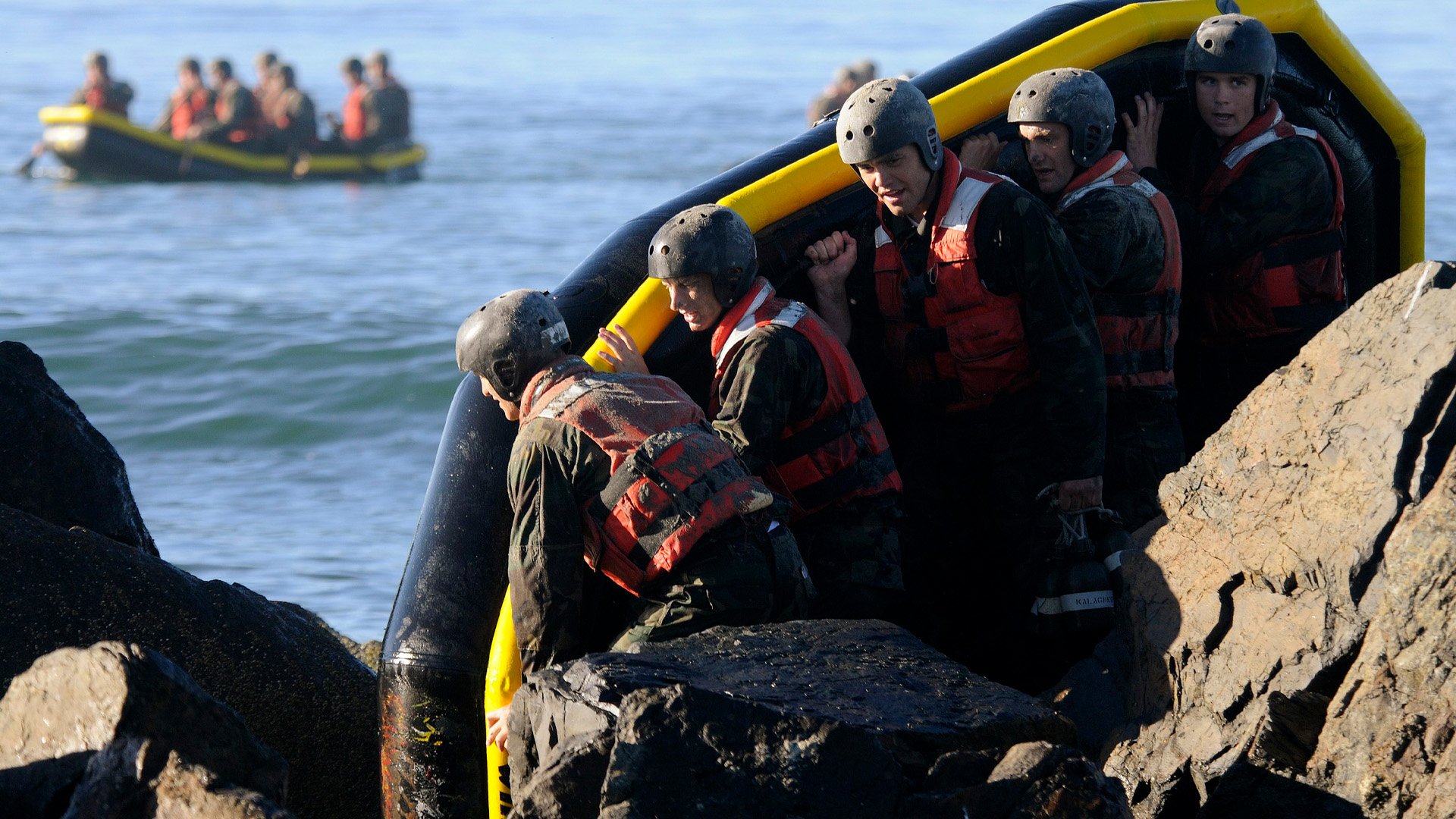
US Navy SEAL candidates from BUD/S class 286 participate in a rock portage exercise Nov. 2, 2010, at the Naval Special Warfare Training Center in Coronado, California. Wikimedia Commons photo.
Mullen returned to the barracks in a wheelchair. There, he and the other Hell Week graduates were supplied with pizzas and Gatorade, a post-Hell Week meal tradition.
But Mullen was unable to hold down food. He started vomiting. Then he began coughing up pink sputum.
According to an autopsy obtained by Coffee or Die Magazine, Mullen filled a 32-ounce bottle with bloody spit in the hours after he completed Hell Week. In their report, Navy investigators noted that, between 3:49 p.m. and 4:09 p.m., “SN Mullen was seen ‘gasping for air’ and appeared to be ‘super swollen’ or ‘bloated’ with blueish colored skin and fluids coming from his mouth.”
At 4:09 p.m., the 911 call was made. Emergency medical personnel arrived in an ambulance and discovered Mullen unresponsive, in “marked respiratory distress,” and lacking a pulse. They initiated CPR and then attached him to a cardiac support machine before rushing him to Sharp Coronado Hospital and Healthcare Center. He was pronounced dead at 5:35 p.m.
Related: WARCOM: Performance-Enhancing Drugs Didn’t Kill SEAL Candidate
How Did Kyle Mullen Die?
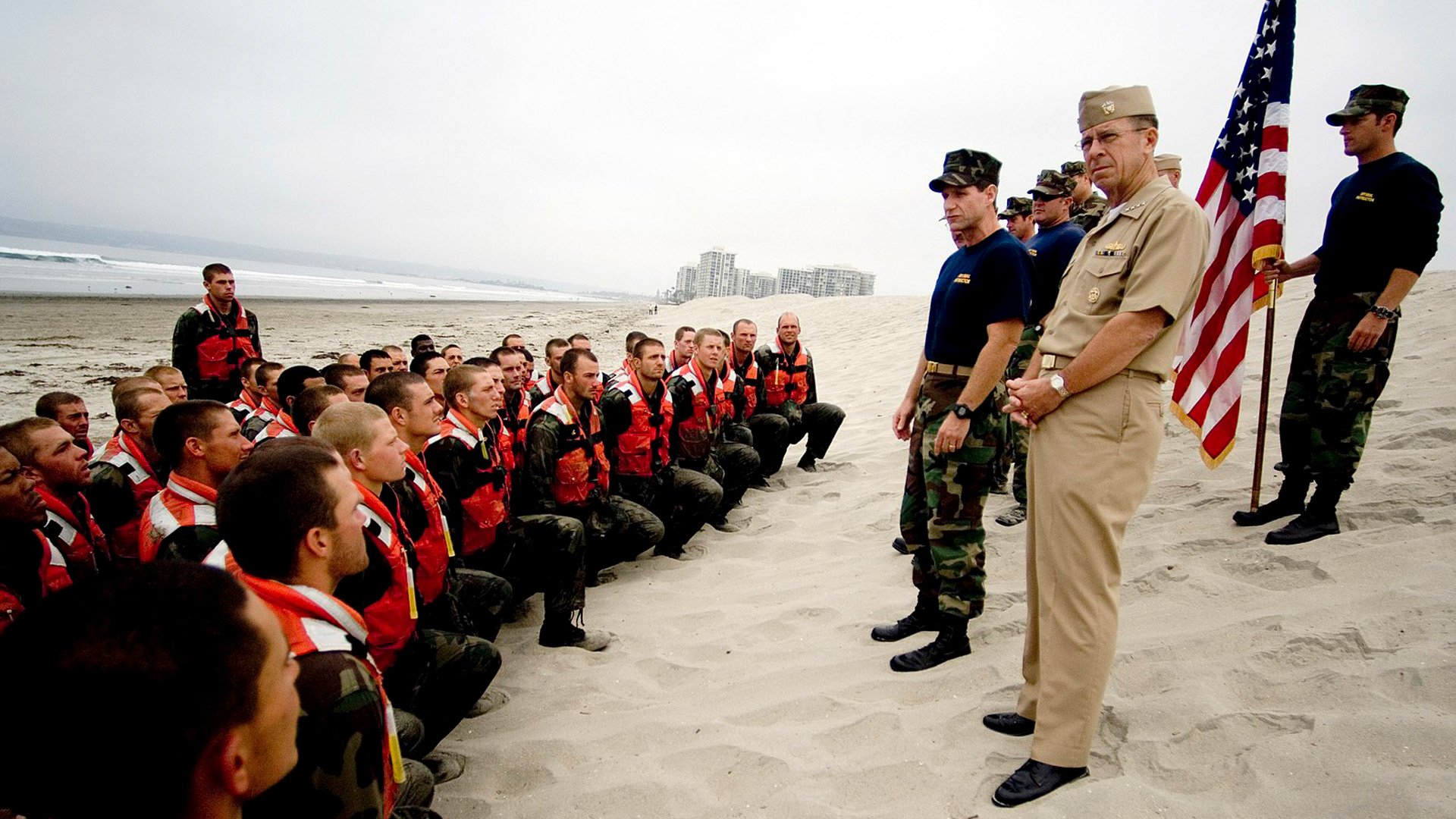
Chief of Naval Operations Adm. Mike Mullen prepares to secure students of Basic Underwater Demolition/SEAL training class 266 from the "Hell Week" portion of their training during a visit to Naval Special Warfare Command. Wikimedia Commons photo.
Injuries are fairly common among sailors going through the BUD/S course, but very rarely do candidates die. According to the Navy, since 1953, approximately 10 sailors have died in training accidents while attending qualification courses for either the SEALs or their predecessor unit known as the Underwater Demolition Teams.
When a US service member dies, for whatever reason, a Line of Duty investigation is conducted to determine what happened.
According to The New York Times, the Navy inspected Kyle Mullen’s belongings after his death and found syringes and performance-enhancing drugs in his car — specifically, testosterone and human growth hormone. The discovery prompted a wider investigation into the use of prohibited substances among sailors attending the course. About 40 SEAL candidates were identified in the sweep as having used steroids or other drugs in violation of Navy regulations.
The items found in Mullen’s car also raised the question of whether steroids had been a factor in his death. But a medical examiner conducted a toxicology test on Mullen’s body and the results came back negative. Ultimately, the Navy concluded that the sailor did not die as a result of drug use. The cause, according to the official investigative report, was “a case of acute pneumonia complicated by an enlarged heart.”
How Did the Navy Determine Kyle Mullen’s Cause of Death?

Seaman Kyle Mullen's green first phase helmet, uniform, boots, and other gear. Photo courtesy of the Remembering Kyle Mullen Facebook page. Composite by Coffee or Die Magazine.
The pink sputum Mullen was seen coughing up during Hell Week is medically referred to as SIPE fluid. SIPE is an acronym for swimming induced pulmonary edema, a condition caused by an accumulation of fluid in the lungs. Symptoms of SIPE include shortness of breath, chest pain, and hemoptysis (coughing up blood).
SEAL candidates are prone to SIPE because a primary risk factor for the condition is physical exertion in cold water. If diagnosed with SIPE, students are usually given a medical waiver to halt training so they can recover.
According to the Navy’s report, the doctor who examined Mullen at the end of Hell Week heard crackling in his lungs but did not diagnose him with SIPE. The report notes that SIPE is an often misunderstood condition. The absence of more obvious symptoms can result in a misdiagnosis.
Earlier in the course, Mullen had informed medical staff that he was experiencing shortness of breath; but according to the Navy report, the doctor who conducted his post-Hell Week screening “didn’t notice SN Mullen breathless or speaking in broken sentences.” Nor did the doctor know that Mullen had coughed up blood.
Mullen’s autopsy revealed symptoms associated with SIPE as well as an enlarged heart. The medical experts assigned to the case were unsure whether Mullen’s enlarged heart was a side effect of overexertion during Hell Week or if it was caused by performance-enhancing drugs. But because Mullen’s toxicology report came back negative, investigators concluded that it wasn’t the latter.
Has the BUD/S Course Been Altered as a Result of Kyle Mullen’s Death?
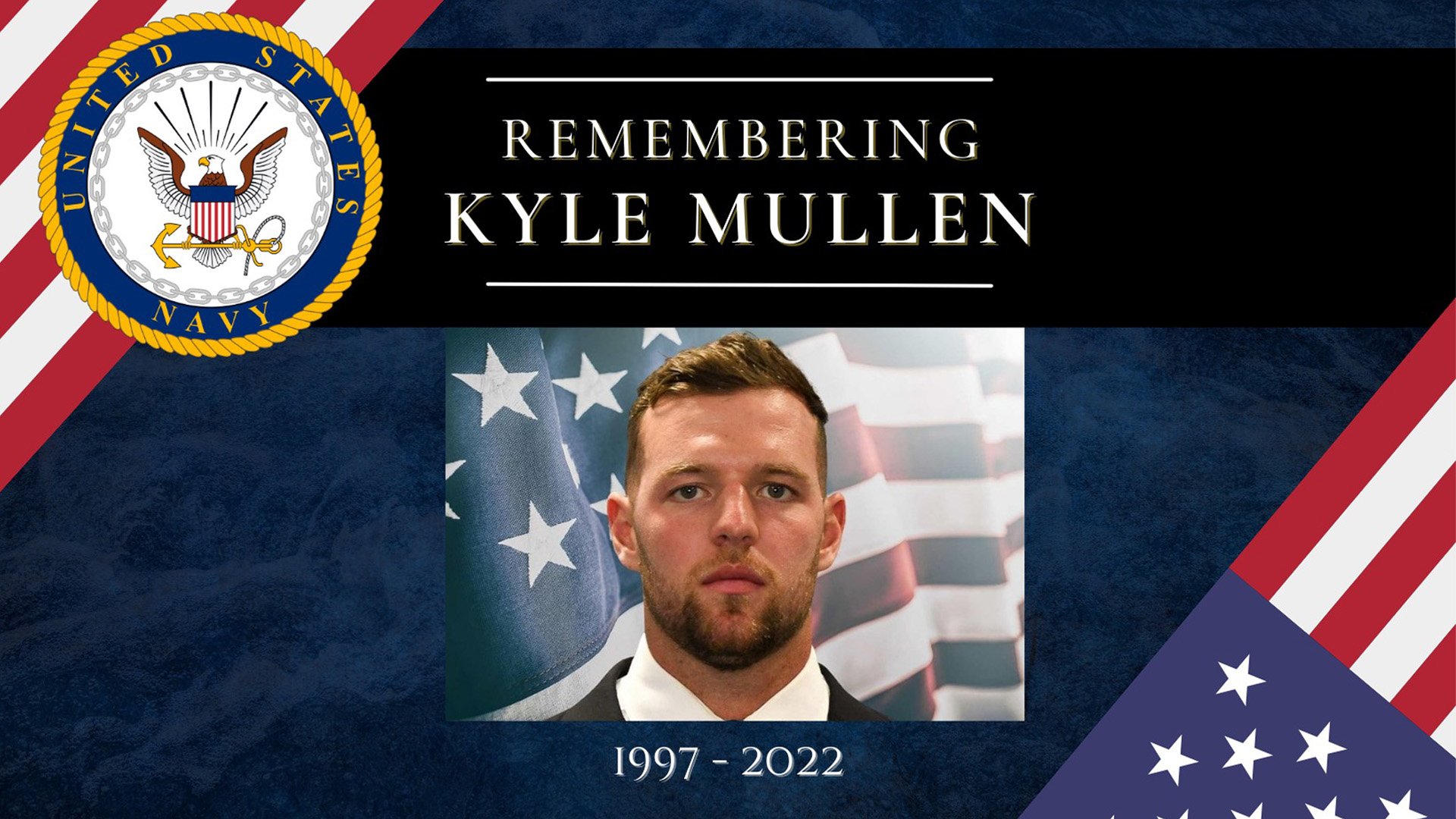
A Facebook page called Remembering Kyle Mullen was created shortly after his death to honor his life. Photo courtesy of the Kyle Mullen Memorial Fund.
In the months since Mullen’s death, his mother, Regina Mullen, has become a vocal advocate for changing the protocols for identifying and treating sick and injured SEAL candidates at the BUD/S course. She believes her son would still be alive had he received proper medical evaluation and care upon completing Hell Week.
“My son was tortured,” she told Coffee or Die senior editor Matt White in a previous report. “He was lying in the barracks on a filthy mattress on the floor. He should have been in the hospital.”
Regina Mullen is not alone in her crusade. In July 2022, New Jersey Rep. Chris Smith introduced a bill that would amend the law called the National Defense Authorization Act. If enacted, the bill, called the Kyle Mullen Navy Safety Enhancement amendment, would force the Navy to review its protocols with the aim of improving medical oversight and care for sailors attending BUD/S. At the time of this writing, the bill had passed the House of Representatives but was still awaiting approval by the Senate.
Read Next: What It Means To Be a Navy SEAL, According to 5 SEALs

Matt Fratus is a history staff writer for Coffee or Die. He prides himself on uncovering the most fascinating tales of history by sharing them through any means of engaging storytelling. He writes for his micro-blog @LateNightHistory on Instagram, where he shares the story behind the image. He is also the host of the Late Night History podcast. When not writing about history, Matt enjoys volunteering for One More Wave and rooting for Boston sports teams.
BRCC and Bad Moon Print Press team up for an exclusive, limited-edition T-shirt design!
BRCC partners with Team Room Design for an exclusive T-shirt release!
Thirty Seconds Out has partnered with BRCC for an exclusive shirt design invoking the God of Winter.
Lucas O'Hara of Grizzly Forge has teamed up with BRCC for a badass, exclusive Shirt Club T-shirt design featuring his most popular knife and tiomahawk.
Coffee or Die sits down with one of the graphic designers behind Black Rifle Coffee's signature look and vibe.
Biden will award the Medal of Honor to a Vietnam War Army helicopter pilot who risked his life to save a reconnaissance team from almost certain death.
Ever wonder how much Jack Mandaville would f*ck sh*t up if he went back in time? The American Revolution didn't even see him coming.
A nearly 200-year-old West Point time capsule that at first appeared to yield little more than dust contains hidden treasure, the US Military Academy said.












